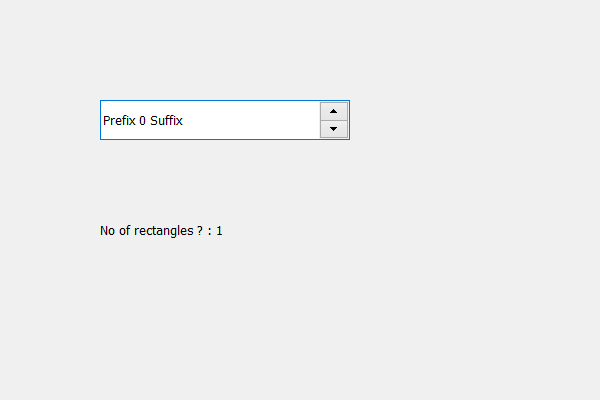PyQt5 QSpinBox – 获取子区域中的矩形数量
在这篇文章中,我们将看到如何获得自旋体的子区域中的矩形数量,子区域持有自旋体的子区域所占据的综合区域。为了获得子区域,我们使用childrenRegion方法。
注意: 将所有的矩形结合起来就得到了实际的子区域。
为了做到这一点,我们使用 rectCount 方法与自旋盒的子区域对象一起使用。
语法: children_region.rectCount()
参数: 它不需要参数
返回: 它返回整数
以下是实现方法
# importing libraries
from PyQt5.QtWidgets import *
from PyQt5 import QtCore, QtGui
from PyQt5.QtGui import *
from PyQt5.QtCore import *
import sys
class Window(QMainWindow):
def __init__(self):
super().__init__()
# setting title
self.setWindowTitle("Python ")
# setting geometry
self.setGeometry(100, 100, 600, 400)
# calling method
self.UiComponents()
# showing all the widgets
self.show()
# method for widgets
def UiComponents(self):
# creating spin box
self.spin = QSpinBox(self)
# setting geometry to spin box
self.spin.setGeometry(100, 100, 250, 40)
# setting range to the spin box
self.spin.setRange(0, 999999)
# setting prefix to spin
self.spin.setPrefix("Prefix ")
# setting suffix to spin
self.spin.setSuffix(" Suffix")
# getting the children region
children_region = self.spin.childrenRegion()
# creating a label
label = QLabel(self)
label.setWordWrap(True)
# setting geometry to the label
label.setGeometry(100, 200, 200, 60)
# getting number of rectangles
count = children_region.rectCount()
# setting text to the label
label.setText("No of rectangles ? : " + str(count))
# create pyqt5 app
App = QApplication(sys.argv)
# create the instance of our Window
window = Window()
window.spin.setFocus()
# start the app
sys.exit(App.exec())
输出:

 极客教程
极客教程